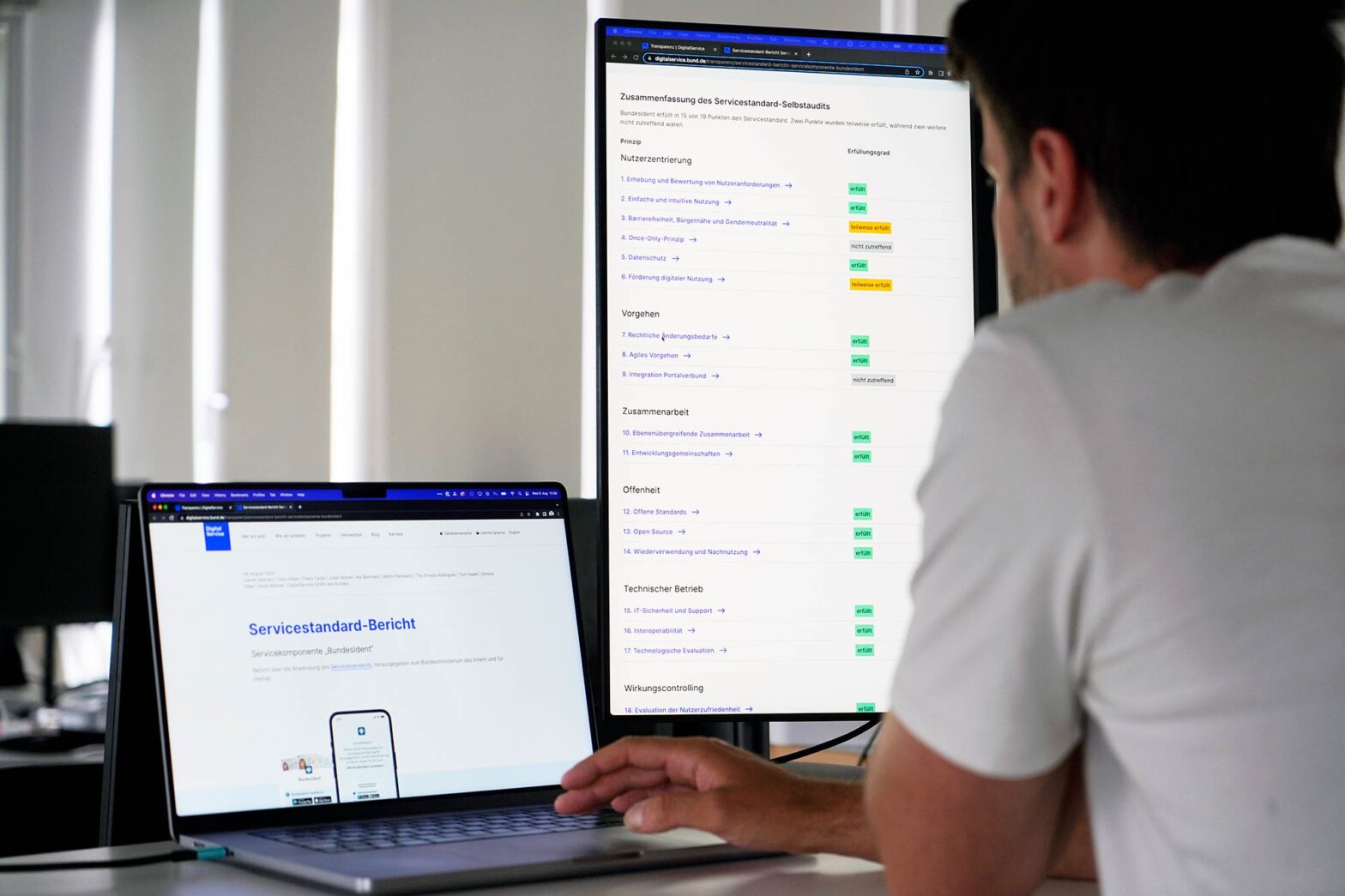Our 3rd self-audit report against the Service Standard has been published. Across the 19 standard points, the team describes how it developed the digital identity service component ‘BundesIdent’ in some detail. The report cross-references and links to various repositories and documents on GitHub. The team finalised, tidied up and published additional material. Especially this isn’t a practice we have seen internationally. So we are pushing what’s expected here – precisely what we aim for.
Various people reached out to me after posting on LinkedIn about the report, our approach, and general public service quality in Germany. Working at think tanks, consultancies and with other governments internationally, they showed interest in this work. Notably absent are German civil servants. I will still need to find out why. In the meantime, I will talk to more people about their approaches abroad. Folks working on similar work in Canada, Iraq, and the UK messaged me, which is encouraging.
So far, the 3 reports can only be accessed via Digital Service’s transparency page, linked from the footer only. The Service Standard section at least got an anchor link for directly pointing to the reports now. In the coming weeks, we want to make the reports more easily accessible through new page types.
The published report also helps me get closer to meeting a quarterly objective around driving further adoption of the Service Standard.
Changing how our work is seen
I have a new colleague who joined the talent acquisition team and who will support our upcoming recruitment efforts. She has an interest in and additional focus on employer branding, which will become incredibly helpful. While it’s not necessarily a term I particularly like – because it sounds like superficial marketing and lipstick on the pig – I strongly care about its associated activities. With her support, we can take a more holistic look at our work.
In anticipation of her arrival, I dug up the various things our former user-centred design team at the Government Digital Service supported for reference. That included career events for underrepresented groups, participation in tech sector recruitment events, short videos explaining roles and responsibilities, ask-me-anything dial-in sessions for potential applicants, blog posts explaining our roles in good detail, laying out how our recruitment process works, or giving advice how to prepare a design portfolio.
In retrospect, I am grateful for the proper documentation of our GDS work. It allows us to build on it now more easily. We started sketching existing touchpoints in our first meeting. Now, I am looking forward to developing new ones shortly. One will be the discipline pages I started working on many months ago. Another one should be a blog post about how diverse the backgrounds of my colleagues are. We have a product manager who is a trained lawyer, a designer who is a trained software engineer, and a software engineer trained as a designer. Being able to speak one other’s language makes collaboration much more effortless. It’s an observation worth writing about.
After receiving an invitation to a local TEDx talk, Charlotte and I discussed narratives for the second week. At first, we collected and reviewed TEDx videos from other public sector people, most of them US-based, to establish a baseline. Next, we looked at 4 central angles: design, the organisation, the German public sector context, and her personal story. TEDx talks have a clear structure, are well-rehearsed and reach a broad audience. This talk should help us reach a few new people and tell them about our work and mission.
Planning autumn activities
Beyond some future engagement, there are at least 6 strands of outward-facing activities I’m helping to plan currently.
Those include:
- the first regular user-centred design community exchange
- the next local Berlin public sector meetup
- the next Service Gazette in English (and the first since 2019)
- two public service design conference talks
- the next international community call
- an international remote event
We made some progress on all of those this week. About half of these things are extra curriculum work. But they make a meaningful contribution to my daily work. Some formats are for documenting, some for learning, some for connecting – for most, it’s a blend.
There are also 2 blog posts ready to be published. One gives a broad overview of our community of practice work at Digital Service and should come out early next. The second one is for the UK government’s Design in Government blog and gives a more specific update on our International Design in Government community activities. It comes out the week after.
There are also a few more blog posts in the making. One of our justice teams is writing up their user research of the past months and summarising what they have learned and how they create a small service in response. Together with the heads of discipline, I am explaining how our delivery disciplines are set up, why we have them in the first place and what we do to support agile coaches, designers, engineers, product managers, transformation managers and user researchers.
All of that should be useful to put out while we will open new roles shortly. Next week, we will start with a senior user research position for our taxes team. Shortly after, we will also advertise new mid- and senior-Level design roles. Having blog posts and articles, public talks and meetups should help us get seen and the word out.
What’s next
In the coming week, I will help prepare Service Standard workshops with ministerial project partners and other stakeholders. And I am expecting us to open the mentioned roles and publish the blog post.

